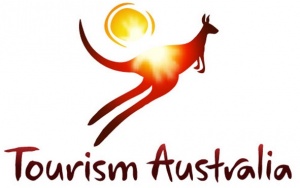Tourism Australia announce ‘India 2020 strategic plan’

A new strategy aimed at tapping into the future tourism potential of India has been unveiled today at the Australia Tourism Exchange (ATE) in Perth.
The India 2020 Strategic Plan, developed by Tourism Australia in consultation with industry and Government stakeholders, is seeking to secure a greater share of the 50 million Indians expected to travel overseas by 2020.
The Plan, unveiled by the Minister for Tourism, the Hon Martin Ferguson AM MP, identifies the main opportunities and sets out the approach required to build Australia’s appeal and to win future market share.
It is the latest initiative formed under the whole of government and industry sustainable growth strategy, Tourism 2020.
India is currently Australia’s 10th most valuable inbound tourism market, with 148,000 visitors spending A$867 million in 2011. One of the world’s fastest growing outbound travel markets, India could rise in annual value to up to A$2.3 billion by 2020 and deliver 300,000 annual visitors.
ADVERTISEMENT
Tourism Australia Managing Director Andrew McEvoy said the India 2020 Strategic Plan, followed the successful roll out last year of a China 2020 Strategy, but taking a much different approach.
Mr McEvoy said the Plan would harness new research, increased resources including a doubling of marketing spend by Tourism Australia in India in 2013FY and adopt a targeted approach.
“India is a market of strong future potential for Australian tourism given this nation’s rapid rise through this Asian Century,” Mr McEvoy said.
“Tourism Australia understands both the potential and location of the desired, future Indian visitor to Australia, yet we also acknowledge this is a unique and complex market, that is becoming increasingly competitive and which needs a clear, strategic approach to build a platform for any substantive future success by our industry.
“With today over 70 national tourism organisations active in India, the time is right for Tourism Australia to invest more to both maintain our presence and enable our industry to better leverage a future competitive advantage.”
Four areas are addressed to develop Australia’s share of outbound travel from India by year 2020:
Choosing the right target customer – thinking about the important visitors to build the market out to 2020
A clear geographic strategy to focus resources – focused on where there is the greatest concentration of affluent households – initially Delhi and Mumbai
Building a sustainable, competitive aviation market between Australia and India
Developing quality experiences that competitively differentiate Australia, and an aligned distribution strategy.
The major cities of Delhi and Mumbai, and the affluent middle class travellers within them, will be Tourism Australia’s primary consumer marketing and distribution targets to sustainably grow Indian visitation to Australia.
“Long haul holiday travel taken by Indians out of their country remains at relative small levels, but is developing fast as global travel is now appearing on many Indian’s life resume,” Mr McEvoy said.
“By investing now Australia can strengthen its position to be better placed for the future when long-haul travel, in particular leisure, becomes more common, whilst also working to secure additional business event inspired travel from India.
“The Indian visitor to Australia is attracted by our unique, accessible pristine nature which can be taken through journeys between cities and regions.
“But what will be critical is the need to now deepen their level of understanding – something which we believe can be well leveraged through our use of There’s nothing like Australia, the joint love of sport between both nations and greater use of advocacy, including the role of celebrity.”
Mr McEvoy said one of the keys to unlocking India’s long term tourism potential is improved air access and capacity, acknowledging that the market is currently under-served by direct non-stop flights between India and Australia
He said the Singapore Airlines/Virgin Australia alliance, Malaysian Airlines, the Qantas Group and Thai Airways, through their respective South East Asian hubs, supported the bulk of existing air services on the Australia-India route.
“Preliminary analysis suggests we’ll need an additional 345,000 seats from our existing position to meet the expected demand for Australia from India out to 2020. Working with those carriers which represent the best opportunity to support Indian travel to Australia is therefore one of our top priorities under this plan,” Mr McEvoy said.
Mr McEvoy said Australian tourism must be ready to fully maximise the ‘India opportunity’, which means investment in new products and experiences, as well as adapting aspects of service culture.
“There is high destination awareness of Australia amongst Indians but low product knowledge, especially beyond the east coast gateway cities. Developing new products that meet the needs of our target customer, along with in-market promotions that showcase new destinations and reasons to visit will be another focus of this Plan,” Mr McEvoy concluded.
Indian arrivals to Australia have grown at a compound annual growth rate of 12.3 per cent over the last decade. An estimated 17 per cent of the world’s population (approx 1.2 billion) are from India.
Tourism Australia’s activities in India are managed from its office in Mumbai and are overseen by senior executives Nishant Kashikar (Country Manager, India) and Maggie White (Regional General Manager for South and South-East Asia).

